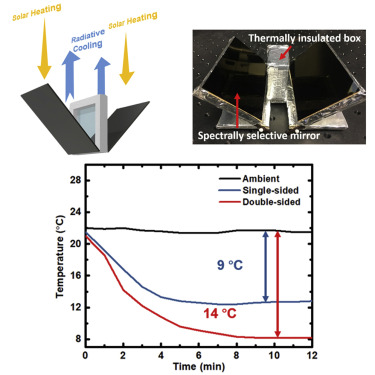Radiant cooling systems absorb heat from a room or building and radiateits in infrared
These devices use panels made ofmaterials that can absorb and radiate heat. The logical way to orient these panels to a heat emitter is to rotate one side towards the sky, like a solar panel, but the new research team argues that this is not the most efficient method. The panels radiate heat from both sides, so in this position some of the heat is radiated back to the ground.
For the new design, researchers from the universityBuffalo relocated the heat emitter so that heat could be collected from both sides and transferred into space. To do this, they placed the thermal emitter vertically between a pair of mirrors arranged in a V-shape. These mirrors then reflect infrared waves up into the sky.
"Since the heat radiation from boththe surfaces of the central heat radiator are reflected into the sky, the local cooling power density on this radiator doubles, resulting in a record temperature drop, ”said Qiaoqiang Gang, lead author of the study.

During experiments, the team showed thatthe device is capable of reducing the temperature inside the test setup by more than 12 ° C in direct sunlight and more than 14 ° C at simulated nighttime.
Mirrors are made of 10 thin layers of silver andsilicon dioxide and are designed to be selective in handling different wavelengths. They reflect mid-infrared waves from the emitter, absorbing the visible and near-infrared waves of sunlight. This prevents solar heat from neutralizing the cooling effect, increasing efficiency.
In addition, the heat absorbed by the mirrors can be used to the advantage - the team used it to heat the water to 60 ° C.
See also:
Look at an 8 trillion pixel image of Mars
A nuclear rocket engine is being built for flights to Mars. How is it dangerous?
Abortion and science: what will happen to the children who will give birth